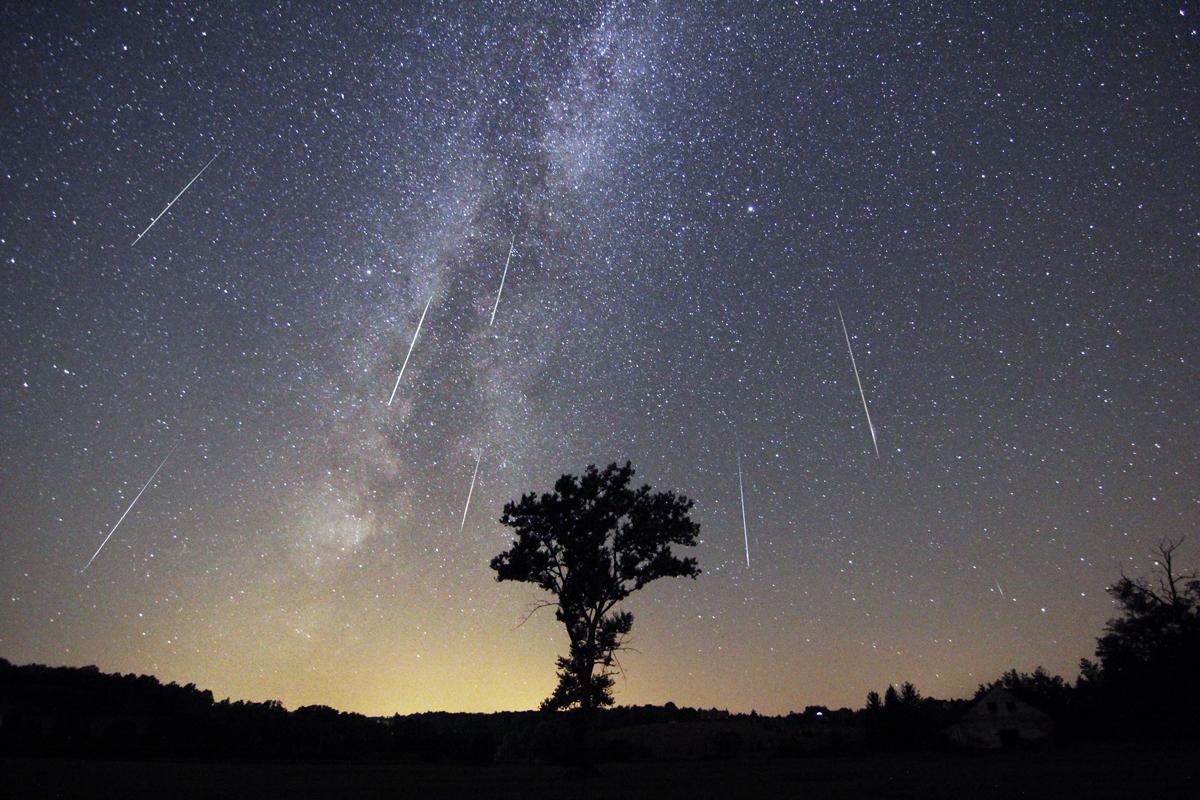
Date:
Meteors are sand-grained-sized particles typically “melted” out of the icy nucleus of a comet as it passes near the sun during its orbit around the solar system. The meteors are usually distributed along the orbital path of the comet and fall into the Earth’s atmosphere when the Earth passes through the comet’s path. The comet associated with the Perseids is Comet Swift-Tuttle, first identified in 1862. It has an orbital period of about 120 years and was last seen in 1995.
Meteor showers occur when the Earth passes through a meteor stream. It’s like walking through a stream in the woods: moist at the bank, shallow at the edge, deepest in the middle and then the reverse of shallow at the edge and moist at the bank. The meteor shower is minimum at first, gradually increasing to peak intensity around 120 per hour, then gradually decreasing in the days after the peak, down to a normal background rate of 10 per hour.
The meteors put on their display 35 to 40 miles above the Earth’s surface. The glow is caused by the compression and heating of the air cushion built up just ahead of the meteor as it plunges into an ever-thickening atmosphere. The heated atmosphere heats the meteor, while the shock of high-speed collision with the atmosphere breaks off pieces. Traveling at 45,000 mph, it’s no wonder that they heat, glow, and then break up as they streak through the atmosphere.
In space, the particles are called meteoroids. If they enter the Earth’s atmosphere, they’re called meteors and typically ‘burn up’. If they’re big enough to actually reach and hit the ground, only then do we call them meteorites. A meteor must be about the size of a grapefruit or softball to make the plunge through the atmosphere all the way to the surface.
While there are a dozen or so major meteor showers per year, only two really stand out as reliably impressive each year, depending of course on observing conditions - the August Perseid shower and the December Geminid shower.
The Perseid shower runs from late July to late August, peaking on or around August 12 every year. This year the peak is predicted to occur sometime between midnight and sunrise on the mornings of Aug. 12 -14, with an hourly rate between 80 and 150 per hour but these numbers and times are very widely debated by professional observers and wholly dependent on your observing situation. This year, New Moon occurs on Aug. 8, so it’ll be just four days old on the 12th, ideal for dark sky observing after moonset. Late moonlight increases on subsequent nights, reducing our ability to see the fainter Perseids.


